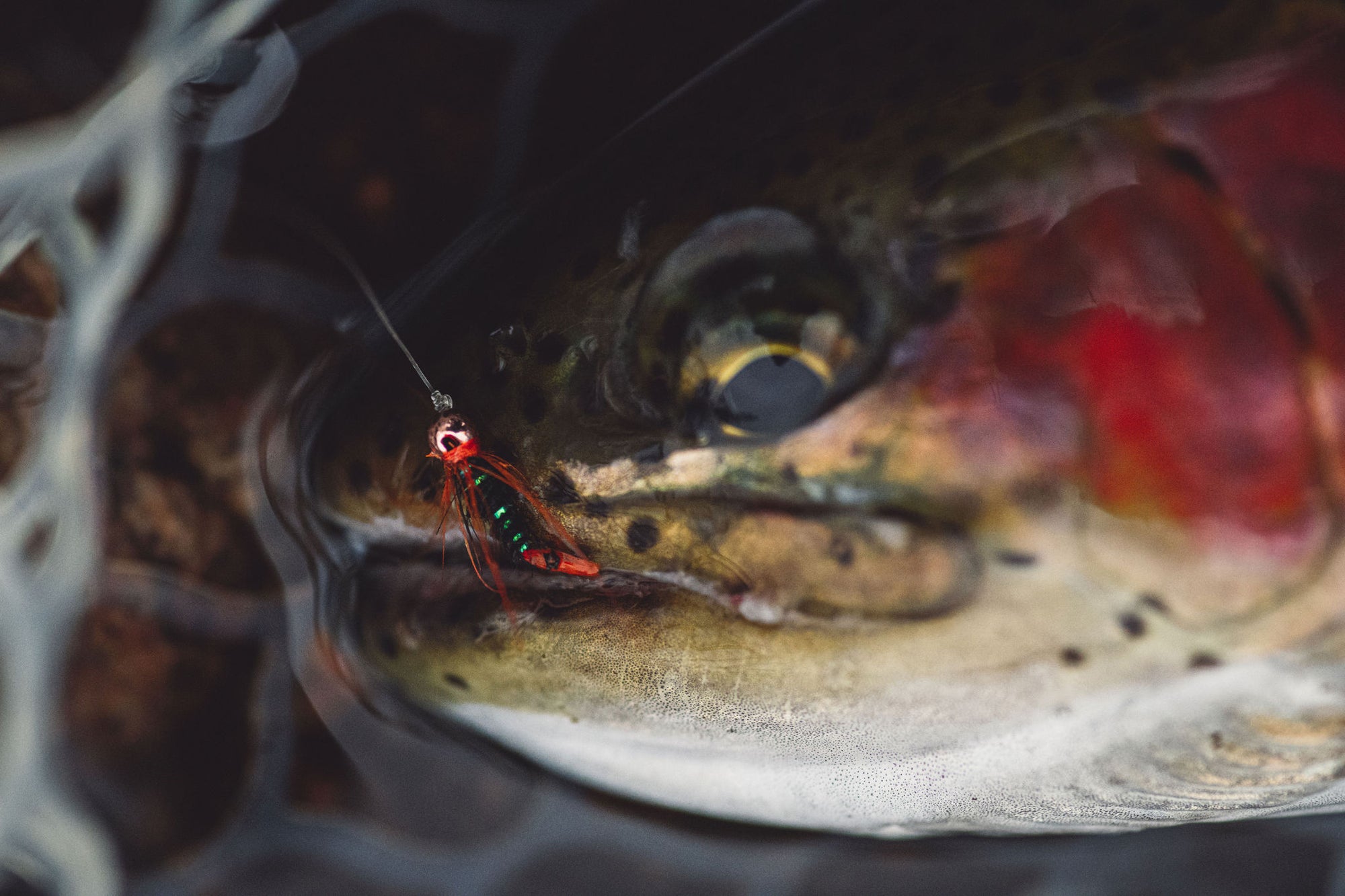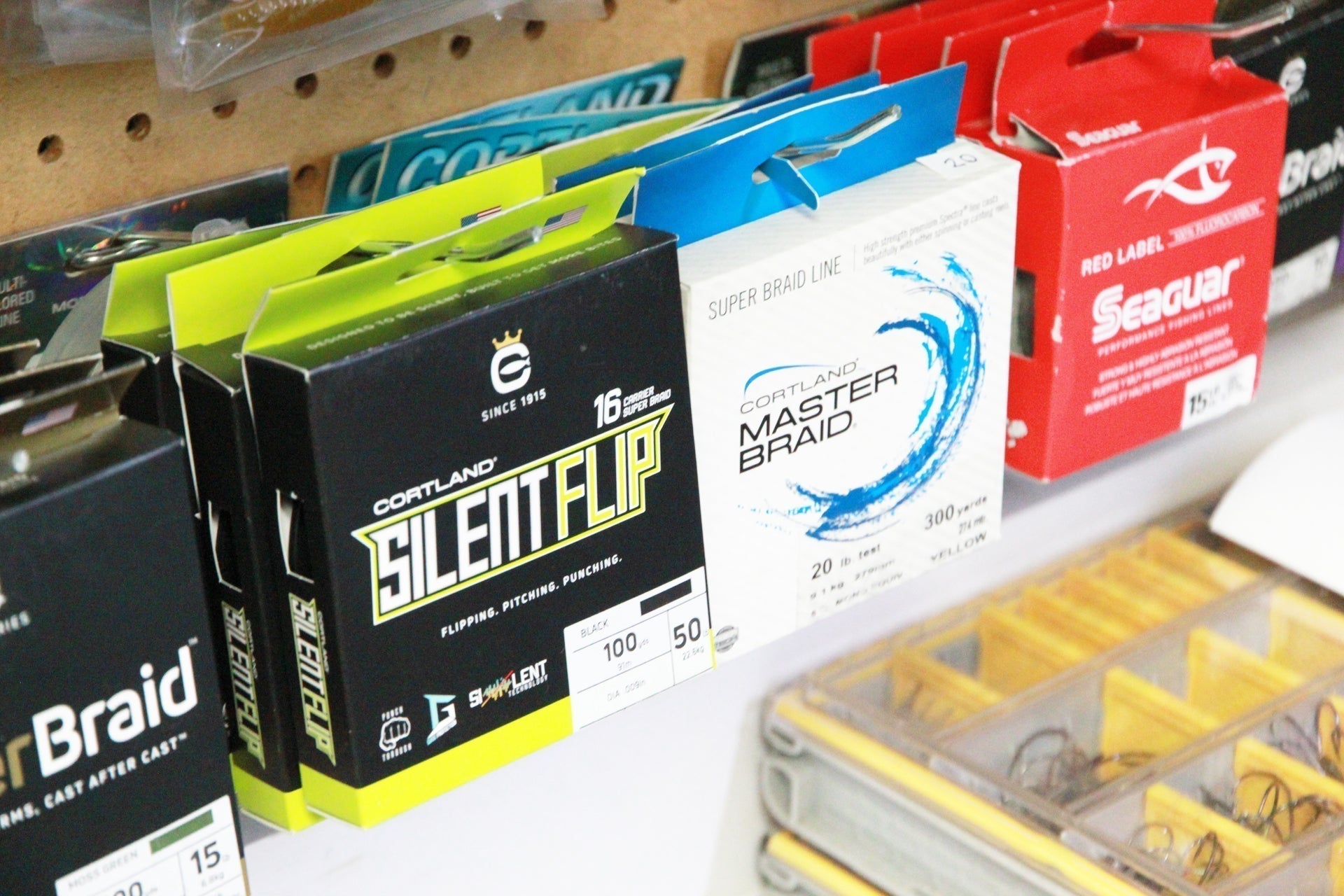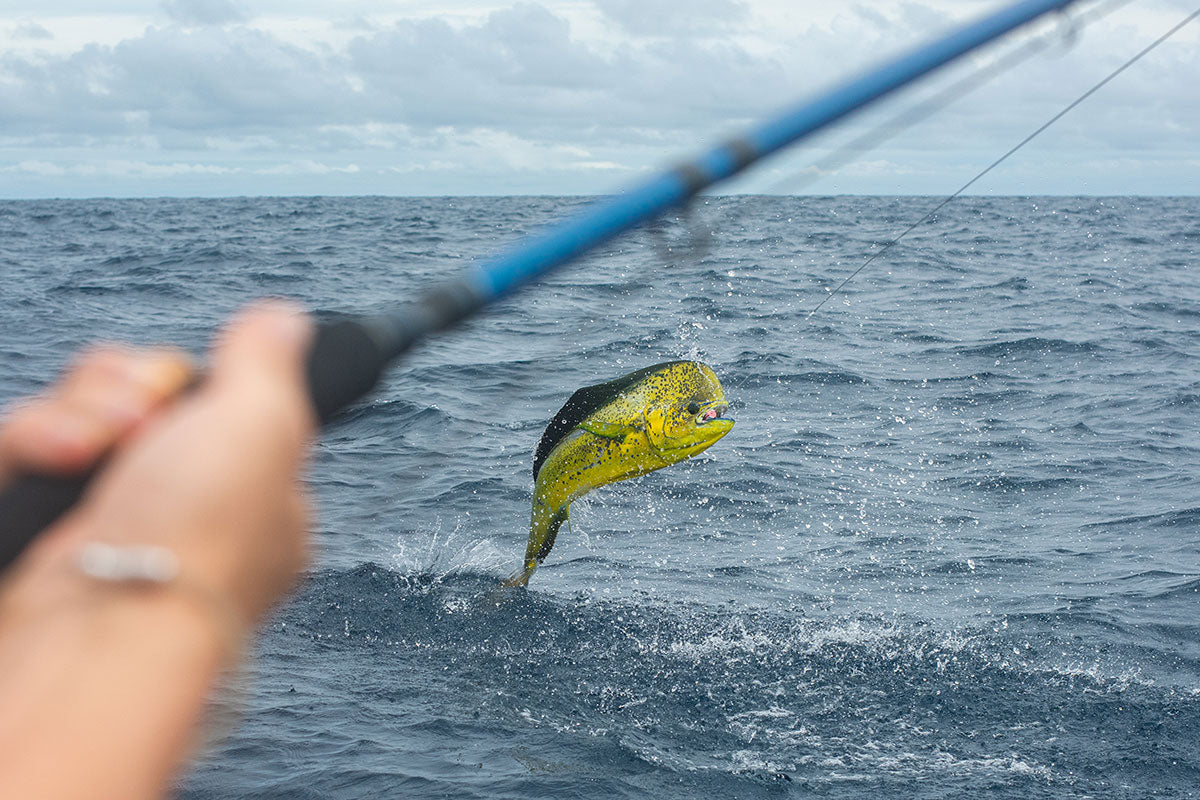Article Written by John Shaner. Learn More About the author below / Article Read Time: 8 Minutes
Becoming a competent fly angler means learning a number of skills. Mastering these skills is part of the fun of the sport and the angler who has a firm grasp of the basics will progress faster and be more successful on the water.
The most important skill is casting. Fly fishing requires casting to present the fly to the fish and every good angler I have ever met is at least a competent caster. Knowledge of fish habitat and habits is essential, as is knowing what the fish you are targeting are feeding on. Wading and/or boating skills will put you in position to reach your target.

However, there is one skill that many anglers seem to lack and that is being able to tie the knots that are essential to ultimate success. You can find the fish, select the right fly, make the perfect cast, get the bite, and set the hook. But if a single knot fails all your effort is wasted.
Just this past spring, I was fishing with a friend who was new to my river. Most of his fishing had been for smaller stocked trout. Here on the West Branch, one is often forced to use light tackle to fool the larger fish. On the day we fished together, I found several very good fish rising to Hendrickson spinners. I explained the approach to my friend and gave him a fly I have a lot of confidence in. He made a good stalk and dropped the fly just right. The biggest of the trout sipped in the spinner and he set the hook. My buddy wasn’t prepared for the power of the big brown as the fish bolted for the middle of the river, but he got the line cleared and the fish on the reel. Suddenly, everything went slack. Dejected and defeated, he reeled in to see what had gone wrong. The fly hadn’t pulled out nor had the tippet broken. What had happened was that his leader-to-tippet knot had simply come undone. We could see the little curly-Q in the last inch of the leader that always spells “bad knot.” My friend had lost a very good fish for no reason other than poor knot tying skills.

If you’ve ever fished with a competent guide, you know that they will insist on tying knots for you. Years ago, when I was guiding in Montana, I was shocked to find that many, if not most, of my clients had no better than rudimentary knot tying skills. So, I tied all their knots, knowing that guiding success depends on getting your people fish. Taking a chance on losing the best fish of the day to a client’s poorly tied knot wasn’t a risk I wanted to take.
Tying strong, reliable knots isn’t beyond the skill of even novice anglers. Let’s look at some of the basic knots and what they are used for, starting with tying the backing to reel arbor and ending with attaching the tippet to the fly.
Easy to follow directions for all these knots can all be found online and in many instructional fly fishing books.
Backing to Reel Arbor:
1. Arbor Knot
To connect my backing to my reel spool, I like the standard Arbor Knot. I do add one little twist though. Instead of wrapping the backing just once around the reel arbor, I make two to five wraps before tying the knot. It will be a bit harder to draw the knot up tight, but it won’t slip around the arbor, making a lose connection.

(On many large arbor reels, you can simply tie the backing to one of the spool cross pillars. Use either a Clinch knot or Uni-knot. This is a very secure connection.)
Backing to Fly Line:
2. Nail Knot or Loop-Loop Connection
Many fly lines today have loops at either end. You can make a loop in the end of the backing and attach it to the fly line with a Loop-to-Loop connection.

However, many fly lines don’t have a rear loop and another attachment method is called for. I prefer, and have used for many years, the tried and true Nail Knot. Yes, this can look like a daunting knot to novices but it’s not all that hard to learn and master. A good view of any of a number online videos and tutorials will get you going. Use some backing and a piece of old or discarded fly line for practice and you’ll be surprised how easy this knot is to tie.

Fly Line to Leader:
3. Nail Knot, Loop-Loop, or Perfections Loop

Until a few years ago, fly lines didn’t have the nifty welded loops that all quality lines seem to have now. Over the years, anglers used several mechanical devices, such as little eyelets you poked into the end of the fly line, braided loops that slipped over the end of the line, and other gadgets. Today, most fly fishers attach their leader using the Loop-to-Loop method. This is convenient and strong enough, but not the best connection to my thinking and experience. The loop-to-loop often hangs up in the rod’s tip-top guide and can jam at a critical moment, such as when you are landing a fish on a long leader. I much prefer to connect the leader to the fly line using the same nail knot that I use for backing to fly line connections. This is a very strong connection and it’s low profile will let the leader-fly line connection slip easily through the guides. If you go with the nail knot, you will have to clip the welded loop from a new fly line to tie the knot properly.
(If you do want to use the Loop-to-Loop method, you should know how to tie the Perfection Loop. If your leader doesn’t have a pretied butt loop or you are building your own leaders, you will need to add one and the Perfection Loop is the best option.)
Monofilament to Monofilament or Fluorocarbon to Fluorocarbon:
4. Blood Knot
For mono diameters larger than 3X or .008” I use the Blood Knot. When you want to join sections to build or repair tapered leaders this has been the standard connection for many years. It’s a knot that looks tricky at first but with a little practice you’ll get the hang of it in no time. One word of advice; don’t try to join sections of mono that have very different diameters as the knot won’t snug up properly. The sections shouldn’t be more than .003” difference in diameter. (Diameters of monofilaments are usually on the spool label)

Monofilament to Monofilament Tippet Knots. (3X (.008”) or smaller).
Now we are getting into the leader to tippet connection, a very important juncture. Changing, lengthening, and modifying tippets is a constant chore during a day’s fishing and being able to do this easily and confidently is important.
5. Surgeon's Knot
One of the most common leader to tippet knots is the Surgeon’s Knot. I used the Surgeon’s Knot for many years but moved away from it a long time ago. It’s biggest attraction is that it’s the easiest of all knots to tie and you can use it to join materials of much different diameters, but other than that, it has little to recommend it. It is a bit weaker than other knots, especially if it isn’t tied correctly. Also, it tends to put a kink in the connection so the tippet may not fall as straight. This is the knot that failed on my friend’s big trout. Still, it does work well enough, is very easy to tie and is a good knot to learn; it’s especially useful for emergency leader/tippet repairs on the water.
The Blood Knot, discussed above, works well to connect tippets but can be tricky to tie in smaller diameter material.
6. Uni Knot and Double Uni Knot
A much better knot in smaller diameter materials is the Uni Knot. The Uni Knot is very strong knot and easy to tie with a little practice. You can also join monofilaments of dissimilar diameters or even join monofilaments to super braid line. I use it down to 7X (.004”) tippets and it has worked well for me for many years.
7. Orvis Tippet Knot
The Orvis Tippet Knot is a great, easy to tie knot. I like it’s strength, low profile and small size. The Orvis Tippet knot is best for tippets smaller than 3X (.008”) and it works well for even the smallest diameter monofilaments. It’s only drawbacks are that it takes more material to tie, and you have to detach the length of tippet you want to use from the tippet spool before tying the knot. Neither of these minor issues should stop you from using what is a very strong, secure, and easy to tie leader to tippet knot.
Tippet to Fly (Hook) Knots:
This is a critical connection. Most knot failures occur here, and we all have lost fish to poorly tied tippet to fly knots.

8. The Clinch and Improved Clinch Knot
This is perhaps the most used tippet to fly knot. I have used it for decades and it’s still my go to knot for this connection. Most other anglers I know use it as well and it is pretty much universal in the fly fishing world. The Clinch and Improved Clinch knot is easy to tie, secure, and has acceptable knot strength. It does have a few faults though. One is that it projects from the eye of the hook eye a bit. This is mostly a problem on very small flies and doesn’t seem to make much difference on hook sizes larger than #18. Another problem can occur when using too many wraps of mono to tie the knot. It’s common to use a lot of wraps when forming the Clinch Knot but instead of making the knot stronger it weakens it. Five to Seven turns are the optimum number. (On very large hooks and with very heavy tippets two to four turns are all that is needed.)

For most of my time using the Clinch Knot, I used the “Improved” version. Talking with anglers who know a lot about knots, I have been told that the “Improved” Clinch Knot doesn’t have any real advantages over the regular version. My own experience over the last few years seems to confirm this and I now usually skip the step that makes the Clinch Knot an “Improved” Clinch Knot; I haven’t seen any difference in performance.
I have come to rely more and more on the Uni Knot as a fly to tippet connection over the last 10 or so years. It’s tied almost the same way as the Uni Tippet knot. If you learn one, you have learned the other. I like that it’s easier to tie than the Clinch Knot, especially on smaller hooks. The strength is at least as good as the Clinch Knot and it snugs down tight and secure. This is also a good knot to use to connect Tippet Rings if you use them. Use the same rules for number of turns on the Uni Knot as on the Clinch Knot.

There are several other very good tippet to fly knots, such as the Orvis Knot, the Davy Knot, the Harvey Knot, and others that I have used over the years. You might want to give them a try as well.

Final Thoughts
Make sure that you snug all your knots tightly. When tightening a knot, monofilament materials will produce heat because of friction between the strands, which can weaken the materials. This is true even in very fine diameters. Wet every knot (except for knots for backing) before drawing tight. This will lubricate and cool the material as it’s being drawn tight. Most knots fail because either too few or too many turns were used. Try to use the same number of turns suggested in the diagrams and videos. Be consistent tying your knots. Try to use the same number of turns every time. Check your flies to see if the hook eyes are clear and smooth. If the eye on a hook eye is rusty or uneven, this can cause the knot to fray and fail.
When fishing, check your knots frequently, even knots in heavier materials can begin to weaken over time. Practice tying knots in your spare time away from the water. Standing in the middle of a trout river is no time to be fumbling with a knot book or cell phone, looking for instructions to tie a simple knot.
As a recap, here’s a list of the knots we discussed.
1. Arbor Knot
2. Nail Knot
3. Perfection Loop
4. Blood Knot
5. Surgeon’s Knot
6. Uni Knot
7. Orvis Tippet Knot
8. Clinch and Improved Clinch Knot
Knot tying is one of the essential and most important skills needed to become a competent fly angler. Mastering a few basic knots will pay off in greater confidence on the water and more fish landed.

About the author
John Shaner is a well-known figure in the fly fishing industry for his association and work with Cortland Line and Hardy. He is what some may call a human encyclopedia of fly fishing facts, history, river systems, fly patterns, and tactics. With over 40 years working in the industry, John has become a living legend in the fly fishing community.


